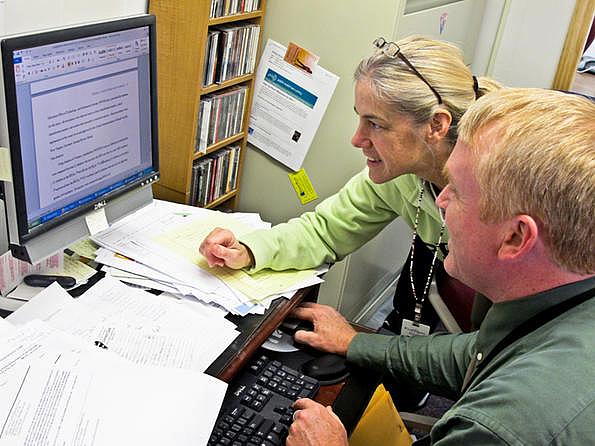Wood researchers: Active kids do better academically
West Virginia is among the top five on just about every national chronic disease list. The state leads the nation in diabetes and obesity, according to the Gallup Healthways poll.
Surveys show that many West Virginians do not realize obesity is a leading cause of many chronic diseases. Many also feel those diseases are hereditary, and there is nothing a person can do to prevent them.
The state's children raise major red flags for the future. West Virginia University screens thousands of schoolchildren every year. In 2010-11, they found that 24 percent of fifth-graders have high blood pressure, 26 percent have high cholesterol, and 29 percent are obese. Eighteen percent of kindergartners and 23 percent of second-graders are obese.
There has been little public discussion of this problem. "The Shape We're In" project aims to stir up that discussion. Written and photographed by Annenberg fellow Kate Long, it will be divided into three parts in The Charleston Gazette, the state's largest newspaper:
• Children at risk
• Programs that work
• Communities making a difference
Some segments will be accompanied by West Virginia Public Radio pieces.
Part 1: "This is a public health emergency"
Part 3: Putting the pieces together
Part 4: Health officials say W.Va. can reverse its chronic disease numbers
Part 5: W.Va. man: diabetes programs work
Part 7: Daily activity affordable, Department of Education says
Part 8: Wood researchers: Active kids do better academically
Part 9: Rocking the gym at 7:30 a.m.
Part 10: Nebraska school district lowers obesity rate
Part 12: 'Everyday heroes' saving own lives
Part 13: W.Va. ranks first in heart attack, diabetes, eight other categories
Part 15: Great Kanawha food fight
Part 17: W. Va. slammed with sugar
Part 18: Glenda and Jill vs. diabetes
Part 19: This is how bad diabetes can be
Part 20: Recognize diabetes before it's too late
Part 21: Logan hardest hit by diabetes
Part 22: Even if your relatives had diabetes, you don't have to

PARKERSBURG -- In 2005, Wood County school nurse Karen Northrup wanted to show that a child performs better academically if that child is physically fit.
"There was an easy way to do that: compare fifth-graders' scores on the FITNESSGRAM and their BMI with their academic scores on the WESTEST standardized achievement test, to see how they correlate," she said.
The FITNESSGRAM is a yearly test of each child's physical fitness. Body mass index is measure of fat calculated from a person's weight and height.
Northrup joined forces with Dick Wittberg, Mid Ohio Valley Health Department director and Lesley Cottrell, a West Virginia University pediatric researcher. Seven years later, they have published four major research papers full of hard data, with three interrelated major findings:
- The higher a child's fitness scores are, the higher that child's WESTEST academic scores are likely to be in math, language arts and science.
- The heavier a child is, the more likely that child is to score poorly on the WESTEST, even after researchers took financial need into account. About 22 percent of Wood County fifth-graders are obese.
- Aerobic fitness overrules obesity. Even if a child is obese, if that child scores high on aerobic fitness on the FITNESSGRAM, the child is likely to score high on the academic test.
"That means that the shape you're in is more important than the shape you are," Wittberg said. An overweight child who is physically fit will score better academically, as a rule, than a "healthy weight" child who is not fit.
"Aerobic fitness was even more strongly related to the children's test scores than obesity, which was significantly related," Cottrell said. "That is a very important finding."
"It is more important to get kids fit than to get them to lose pounds," Wittberg said. If children become fit, weight loss will follow.
"It says that, if you can get a child more fit, you stand a good chance of improving that child's academic performance, no matter what the child's weight is," Cottrell said.
At a time when schools are cutting back on P.E. and recess to drill children for the WESTEST, "that has immediate policy implications for the state," she said. "This research shows we're going in the wrong direction in terms of the structure of our school day. Children need more physical activity, not less."
The three have presented their research at national conferences of the American Heart Association, the National Association of School Nurses, and the American Public Health Association. They also presented to the West Virginia Board of Education.
"I have been influenced by their work," said state Superintendent Jorea Marple. "They gave us homegrown research that confirms what researchers in other states and around the world have found is also true in West Virginia."

